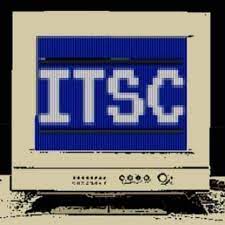Why you can trust TechRadar
We spend hours testing every product or service we review, so you can be sure you’re buying the best. Find out more about how we test.
The Falcon A1 Pro is the updated version of the compact Falcon laser engraver and offers some significant new features, making it a great choice for most homes and small businesses. There are, of course, limitations compared with the physically larger 20W laser engravers, but for the most part, if you’re working small-scale or with flat materials, this model will be more than sufficient.
One thing I liked about this machine is the optional extractor that can be purchased alongside it. While I was unable to test this, knowing that Creality has gone the extra mile to produce its own extractor shows attention to detail. The air assist that came with the laser engraver helped to keep the workspace clear, and the results were some of the most detailed and accurate cuts and engraves of any laser I’ve used.
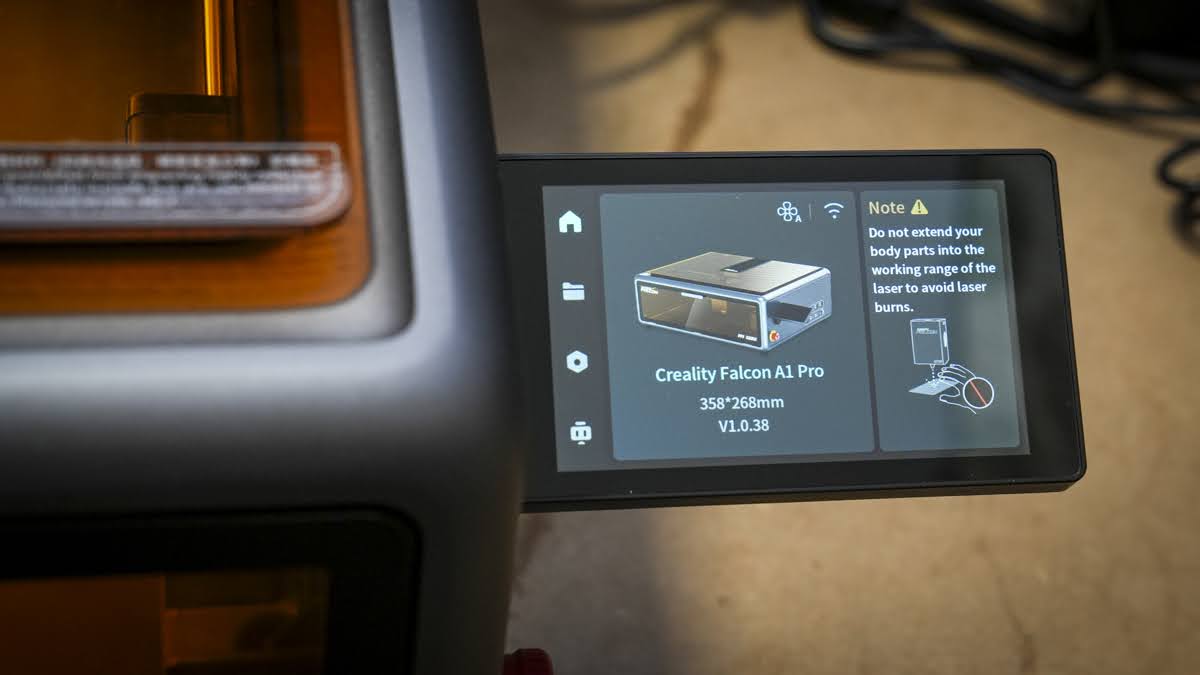
Essentially, any material up to about 4 cm in depth, although you can remove the base and work with slightly deeper objects if needed.
Several features stood out on the Falcon A1 Pro, such as the incredibly precise auto-focus. The usual adjustment of the head was all done automatically with no manual intervention. With the integrated camera linked through to the software, it was very easy to place and organise designs before burning or engraving them into your chosen material.
However, there are a few quirks to the machine. Most notably, the screen is fixed to the right-hand side and doesn’t fold down. While this isn’t an issue if you have plenty of space, it can get in the way. Several times, when placing items next to the machine while it was off, I forgot the screen was there and gave it more than a hefty bash.
Navigating the options and settings is relatively easy. Creality has taken a lot of the work out of using a laser engraver. If you run a small business and want to quickly engrave wood or small pieces of metal, the ability to swap between the blue and IR laser in seconds makes a lot of sense.
Another aspect I liked is that it comes with Falcon Design Space software, which enables easy interaction with the engraver. If you want more flexibility, you can use LightBurn or another compatible software just as easily.
Ultimately, the small size and ease of use make this a great first laser engraver. It has the potential and quality to take your work to the next level. If you plan to use it commercially, it has the accuracy, build quality and power to do advanced work, just keep in mind that it doesn’t have the height of some larger and more expensive options.
Creality Falcon A1 Pro: Price & availability
The Falcon A1 Pro is available for £869 / $899 directly from the Falcon Creality website by clicking here.
It’s also available through many major online retailers. Alongside the main machine, it’s also worth considering the Falcon 2W IR laser module, available for $335 / £335, and the new Falcon AP1 smoke purifier (not tested in this review), now available for 569 / £569.
Creality Falcon A1 Pro: Design
Specs
Laser Power (Blue): 20W diode
Laser Power (IR): 2W infrared (Pro model)
Movement System: CoreXY – up to 600 mm/s
Working Area: 268 x 358
Camera: Yes
Weight: 16.8kg
Machine size: 567 x 468 x 211 mm (685mm with screen)
Connectivity: USB, TF card, Wi-Fi (via Creality Print)
OS Compatibility: Windows/macOS/Linux (via LightBurn or Creality Print)
Safety Features: Enclosure sensor, auto stop on lid open, flame detection, buzzer
Air Assist: external unit automatic
Accessories: Goggles, tools, air assist, optional rotary & IR module
It’s great to see that Falcon laser engravers have stepped away from the open frame design and gone for something more commercial and safe in this fully enclosed option. The design has come a long way, with a solid metal frame measuring 567 x 468 x 211 mm, although with the screen, the width increases to 685 mm.
Unlike some of the larger laser engravers I’ve looked at recently, while the Falcon A1 Pro is still heavy at 16.8 kg, it’s easier to move around a workshop. Alongside the machine, you should also have the extractor attached to the back and the air assist that comes with the unit.
Inside, it comes standard with a flat metal bed, but there are honeycomb options available, which are well worth purchasing, especially for cutting. For the purpose of this review, I installed the honeycomb bed to test all the features of this machine.
The actual engraving area measures 268 x 358 mm. For the most part, I used sheets of 6mm ply for the test projects.
Several key features stand out, and you can see how Creality has borrowed from its 3D printer series. Firstly, there’s comprehensive connectivity: you can control this engraver via computer or app, and there’s even a smart touchscreen similar to those on the recent Creality K2 Pro I reviewed.
A big feature is the smart camera with auto-focus. Manual focusing is a common issue with engravers. While pin focus systems help, having it done automatically makes things much easier.
Another crossover from 3D printing is the CoreXY mechanics, allowing the machine to reach speeds of up to 600 mm/s – much faster than older machines.
A major update is the quick-change head. While it includes the 20W blue laser, you can also quickly swap in a 2W IR laser, which is better suited for metals and shiny surfaces.
It’s great to see that this second iteration is fully enclosed, which is safer. It includes key safety features: an extractor fan at the back, an emergency stop button, and eye protection covers to shield from the powerful internal laser.
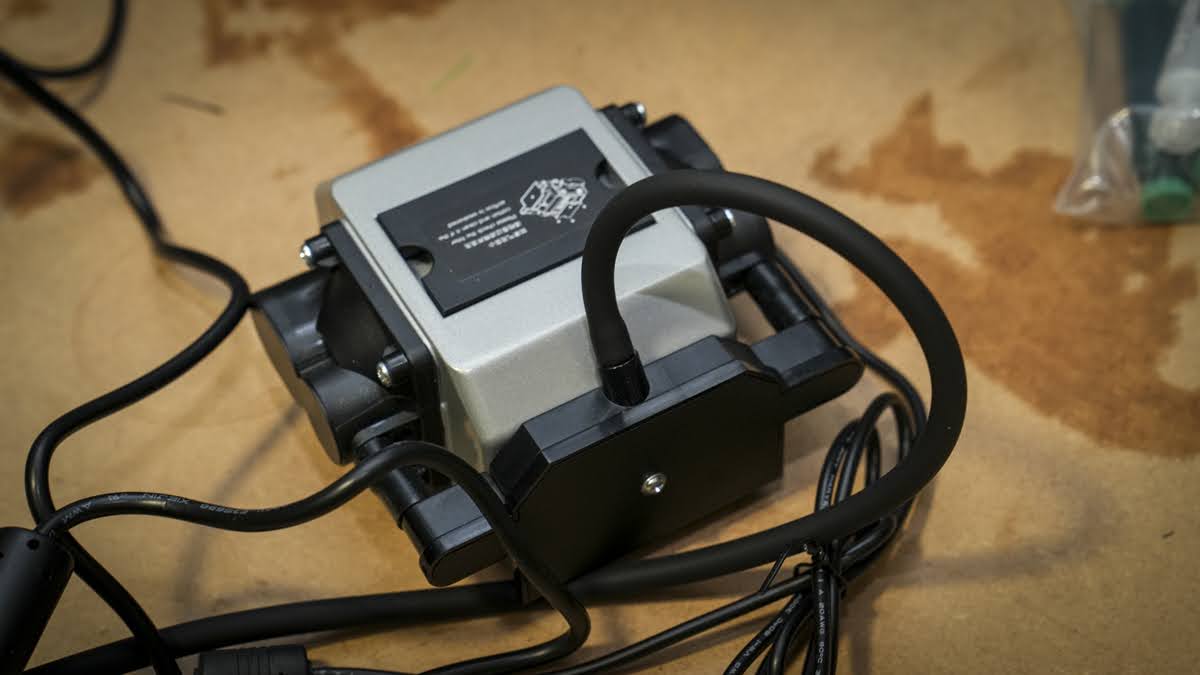
Creality Falcon A1 Pro: Features
In the last year, laser engravers have become far safer and easier to use. Even the software has taken a leap forward in usability. Unlike 3D printers that still require technical knowledge, laser engraving is now almost as simple as drawing a picture, scanning it, and sending it to the machine.
One of the big features of the new machine is that it’s fully enclosed. You can access the workspace through either the top or front, making it easier to position, even on a shelf.
Material height is limited. While there are some adjustments possible for taller objects, anything up to about 4 cm is ideal. This makes it perfect for items like placemats or keyrings on flat 6mm ply. If you’re thinking of engraving glasses or other cylindrical materials, there is an optional rotary attachment, but to use this, a little machine adjustment is needed.
As expected, there are plenty of safety features, especially now that it can cut and engrave with two types of lasers. As it supports a wide range of materials, there’s flame and smoke detection and has an instant stop button alongside a series of sensors to halt operation if needed.
Inside the machine, there’s an HD camera for accurate positioning within the software. A red laser rangefinder handles the auto-focus, which worked perfectly in testing and replaces the more standard pin focus stick.
The camera links directly with the software, allowing remote viewing of the work in progress, so even if the machine is in a workshop, you can monitor it from your office.
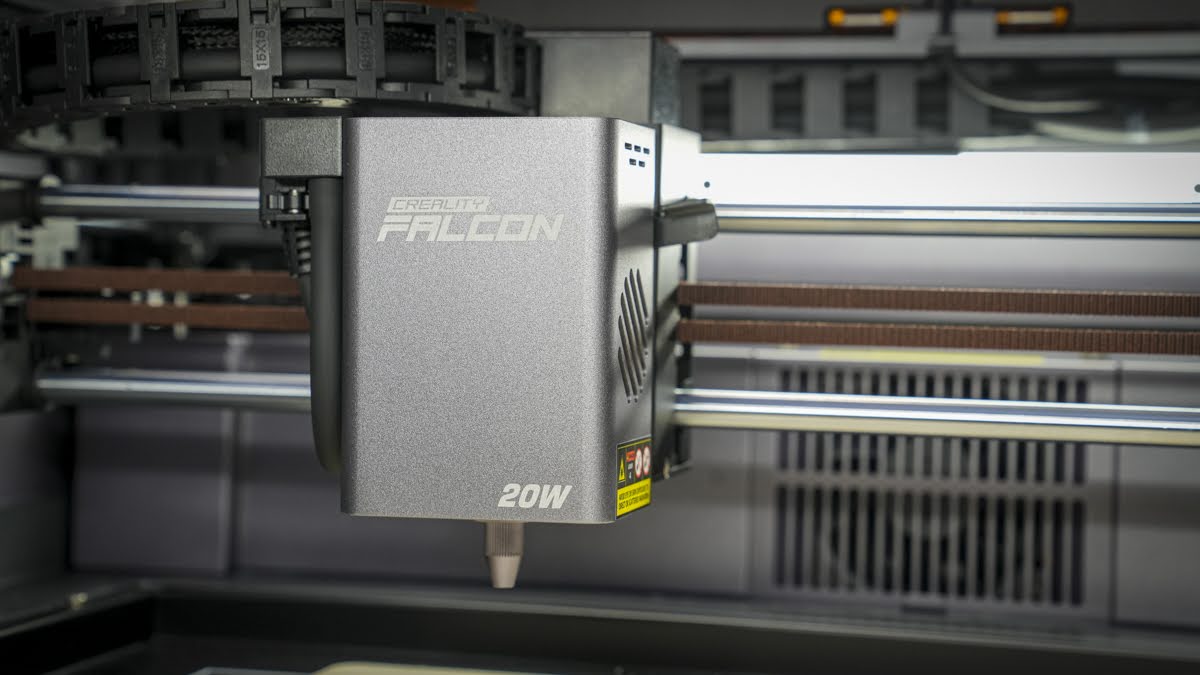
Another big plus is dual laser compatibility. The unit ships with the 20W blue laser module, but a 2W IR module is also available. It’s expensive but enables engraving of metals and advanced materials such as porcelain and glass.
This unit’s standout features include the smart touchscreen, smart camera, auto-focus, and all-in-one software. These allow layout and setting adjustments, fast head swapping, and a fully enclosed design.
When I began the review, my main reservation was the lack of a Creality air purifier. I had to adapt one of my existing extractors. However, since then, Creality has released the Falcon AP1 air purifier, which looks compact and well-matched to the setup. I’ll provide updates when I test it. There’s also a Falcon rotary kit for engraving glasses, an optional extra, but it’s great that compatibility is built in.
Creality Falcon A1 Pro: Performance
One of the things I really like about this fully enclosed laser engraver is that it’s quick and easy to set up. You simply unpack everything, plug in the cables, including the air assist, and connect the extractor to an air purifier. In my case, this was one from the company XTool, and I was able to get started quickly.
To transfer files from your computer to the machine, there are several options. Many laser engravers require a direct connection, but the Falcon A1 Pro can operate wirelessly. Once I installed the Falcon software and completed setup, I connected the machine, laid out my design, and sent it directly over the wireless network. This made the whole process incredibly easy. Starting out with the Falcon Design Space really couldn’t be simpler.
There are several features of the software I like, including the camera that shows real-time placement of the material and your design. For example, when cutting and engraving a pencil case, it was very easy to lay out the parts. I couldn’t fit the entire design onto a single cut, but I was able to break it across two projects.
Another aspect that appealed to me was the auto-focus. I swapped between 6mm and 1mm materials for a variety of projects, from coasters to pencil cases to the outer shell of a boat. I could easily adjust settings in the software to match the material being used.
As I changed between different types of wood, a few features began to really impress me about the Falcon A1 Pro, showing how refined it is, even if space is limited.
Firstly, the air assist activates when needed, keeping the area around the laser free of debris and smoke. This results in sharp, clean lines with very little burn. With a bit of time spent fine-tuning the settings, I was able to get some of the finest, most detailed engravings I’ve seen at this level.
As laser power increased for cutting, the air assist kept up with the demands, maintaining a clear workspace. But it wasn’t just the air assist; the extractor fan at the back is very powerful, yes, I had to create a step-down coupling from ASA on the Prusa Core One. When I attached the exhaust tube, despite its length, I could feel decent pressure at the end, and this was boosted further when connected to the air purifier. Even at full power, the smoke was extracted rapidly, keeping the working area clear and smoke-free.
I tested a range of materials, including wood, leather, acrylic and glass. The quality of both the 20W and 2W lasers impressed me, and it was surprisingly easy to swap between the two heads. The software recognised the difference automatically, which added to the ease of use.
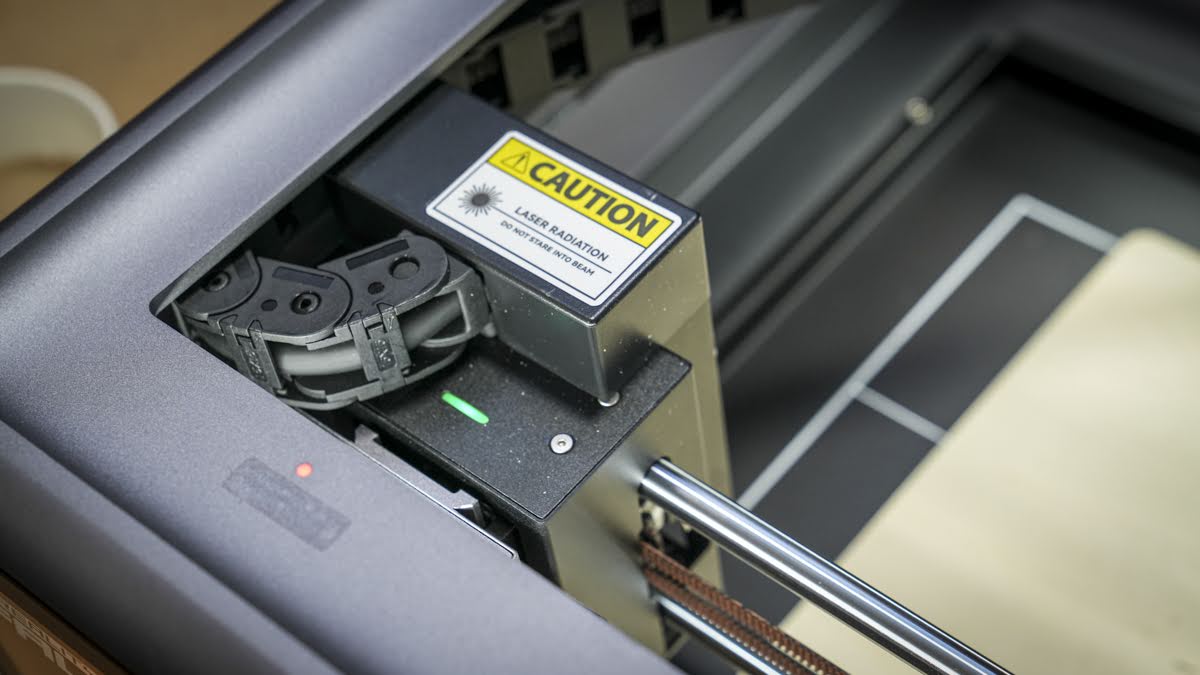
For the most part, using the machine is straightforward. I really like its compact size, but a few things irritated me. Firstly, the screen is fixed to the side and can’t be folded down. This meant that on the work surface, I occasionally knocked the protruding screen while placing material or moving around. It often got in the way, catching cables and other items. While I should probably be more careful, it did feel a little awkward.
Then there’s the limited material height, around 4 cm. Although you can remove the base and raise the engraver, that stretches beyond its intended use and could affect safety, and again, I was able to 3D print some extension legs on the Core One to raise the height of the machine.
So, while it doesn’t have the flexibility of larger machines, its small size makes it extremely versatile. If you’re working in a small shop and need a laser engraver that won’t dominate your workspace, this is a solid option. The availability of a rotary attachment adds further flexibility, though using it requires removing the base and propping the machine on stands. Still, it’s good to have the option, even if not as streamlined as on larger machines.
Creality Falcon A1 Pro: Final verdict
When the Falcon A1 Pro first arrived, I found it difficult to pinpoint who it was aimed at. Here was a smaller laser engraver and cutter that fits neatly on a desktop. While the fixed screen annoyed me at first, the usability and interface were excellent. I plan to 3D print a hinged bracket so the screen can fold down. It seems like a small design detail that would make a big difference in a workshop.
I’m used to larger machines with greater flexibility in materials and accessories. While the A1 Pro still has a lot of potential, it’s more of a fixed unit designed for small business or enthusiast use. As long as you’re focused on cutting and engraving flat materials, it’s absolutely ideal. But once you start adding advanced options like the rotary cutter, you have to modify the system, which feels a bit outside the scope of what it should be doing.
In terms of accuracy and cutting, I’m incredibly impressed. Of all the machines I’ve used, I genuinely like the small size. Oddly, the ability to load materials through the front, without lifting the lid, was a major plus. This allowed it to sit on a high shelf and free up workspace for other machines. As something I wouldn’t use constantly, its compact size and design make it an ideal option.
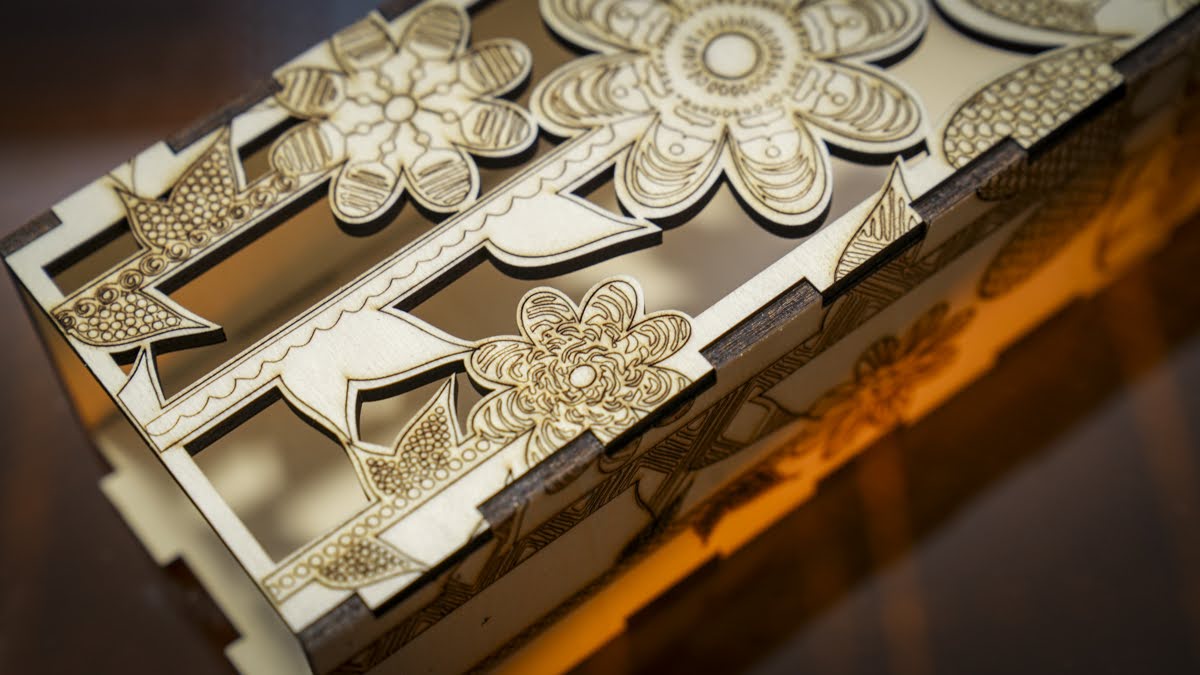
I also like that it includes air assist, although it was a bit of a shame I didn’t get to test the new Falcon AP1 air purifier, as I think it would’ve completed the setup nicely.
By the end of testing, I was impressed with the Falcon A1 Pro. The 20W laser power was enough to cut through 6mm ply cleanly and with precision, and the engraving quality was consistent across multiple materials. It was also extremely fast, especially when paired with Creality’s Falcon software, which is well thought out. The integrated camera made it very easy to place designs onto objects and helped minimise waste.
If you’re a small business or enthusiast looking for a compact laser engraving and cutting solution with accurate, clean results, the Falcon A1 Pro is a great option. But do factor in the limitations on material height and the additional cost of extras such as the Falcon AP1 air purifier, honeycomb grid, and 2W IR laser; these can add up to over $1,000 / £1,000 on top of the base unit.
Should you buy the Creality Falcon A1 Pro
|
Value: |
The base machine is a great value and offers one of the best options at this size; however, the expense quickly escalates with accessories |
4 |
|
Design: |
Nice design overall with front and top loading options—just a shame about the fixed screen position |
4 |
|
Features |
The fast-swap dual laser options are good, but fitting the rotary attachment feels a bit ad hoc |
4 |
|
Performance |
Exceptionally fast with accurate cuts and engraves |
4.5 |
|
Total |
An excellent option if space is limited and a solid solution for small businesses and enthusiasts |
4.5 |
Buy it if…
Don’t buy it if…
For more crafting tech, I’ve tested and reviewed all the best 3D printers.
The post Creality Falcon A1 Pro laser engraver review first appeared on TechToday.
This post originally appeared on TechToday.
